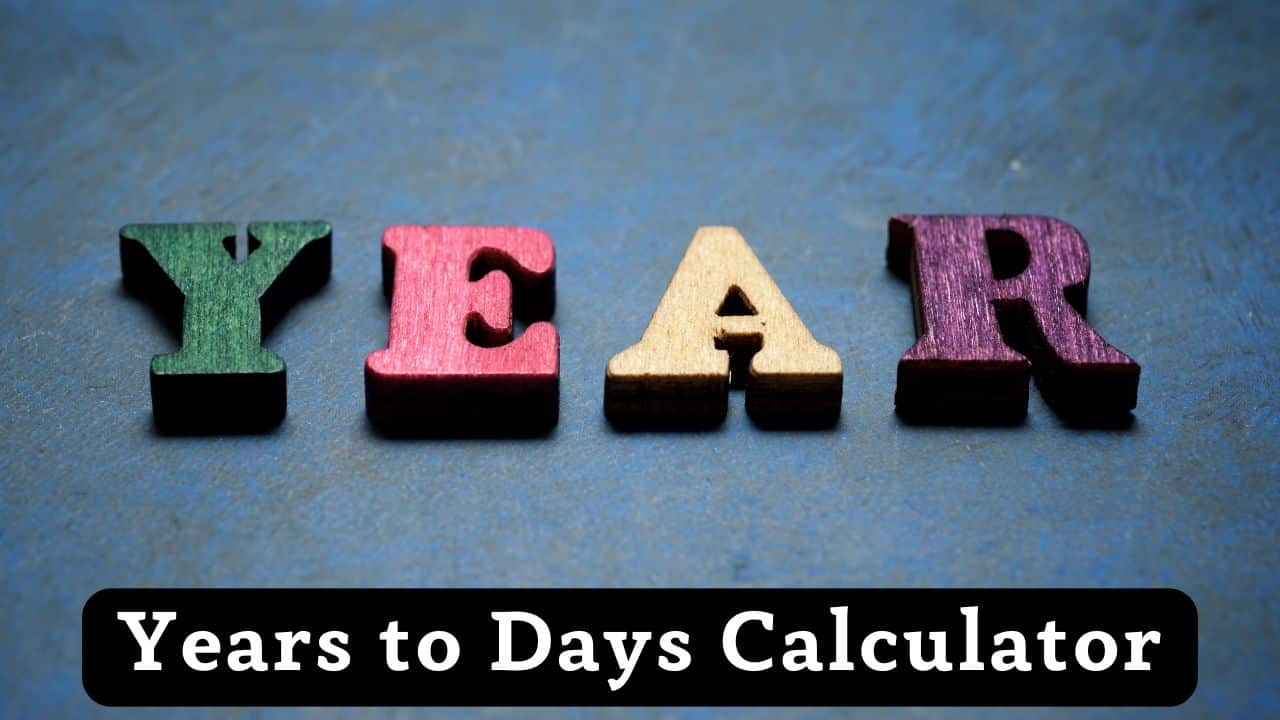Years to Days Calculator
Precise time conversion with detailed breakdowns, quick presets, and educational insights

How Many Days in Years
There are 365 days in a regular year and 366 days in a leap year. On average, accounting for leap years, there are 365.25 days per year.
The Conversion Formula
Days = Years × 365.25
Years = Days ÷ 365.25
This formula accounts for the precise number of days in a year, including leap years.
Example: 5 years × 365.25 = 1,826.25 days
Time Relationships
Understand the time relationships:
1 Year = 365.25 Days = 52.18 Weeks = 12 Months
1 Day = 24 Hours = 1,440 Minutes = 86,400 Seconds
The decimal accounts for leap years occurring every 4 years
Quick Reference Table: Years to Days
| Years | Days | Weeks | Months | Common Usage |
|---|---|---|---|---|
| 1 | 365.25 | 52.18 | 12 | Standard year |
| 2 | 730.5 | 104.36 | 24 | Biennial period |
| 5 | 1,826.25 | 260.89 | 60 | Lustrum |
| 10 | 3,652.5 | 521.78 | 120 | Decade |
| 25 | 9,131.25 | 1,304.46 | 300 | Quarter century |
| 50 | 18,262.5 | 2,608.93 | 600 | Half century |
Frequently Asked Questions
Why do we use 365.25 days per year?
We use 365.25 days because it accounts for leap years. Every 4 years, we add an extra day (February 29th), so the average becomes (365 × 3 + 366 × 1) ÷ 4 = 365.25 days per year.
How do leap years work exactly?
A leap year occurs every 4 years, except for years divisible by 100 (unless also divisible by 400). For example, 2000 was a leap year, but 1900 was not. This keeps our calendar aligned with Earth’s orbit.
What’s the difference between calendar days and exact days?
Calendar days are whole numbers (365 or 366), while exact days include the decimal (365.25 average). For precise calculations over multiple years, using 365.25 gives more accurate results.
When is this conversion most useful?
This conversion is useful for age calculations, project planning, financial planning, scientific calculations, and any situation where you need to convert between yearly and daily timeframes with precision.
Interesting Time Facts
Did you know? The Earth’s orbit around the Sun takes approximately 365.256363004 days, which is why we need leap years to keep our calendar synchronized with the seasons.
Julian vs Gregorian: The Julian calendar had 365.25 days per year, but the Gregorian calendar (used today) is more precise with an average of 365.2425 days per year.
Age Calculation: When calculating exact age, using 365.25 days per year gives more accurate results than using exactly 365 days, especially over longer periods.
Understanding precise time conversions is essential for accurate calculations in science, finance, and everyday life.
